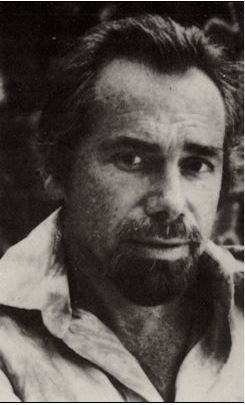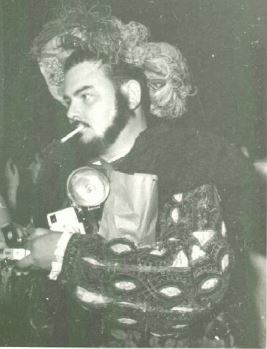Comments
In 1956 Robert Silverberg (1935- ) and Randall Garrett (1927-1987) were young, hungry, and astoundingly prolific, the perfect recipe for hack pulp writers and their successors, the hack digest writers. Silverberg and Garrett published over five dozen stories during that year, seventeen of them as collaborations using the pseudonyms Gordon Aghill, Alexander Blade, Richard Greer, Clyde Mitchell, Leonard G. Spencer, and Gerald Vance. Collaboration was easy for them: they literally lived next door to one another in a New York apartment building. Garrett, who had been publishing for five years, introduced the younger Silverberg to the small world of New York writers and editors. (Harlan Ellison lived on a different floor in the same building.)
Garrett’s guidance brought immediate success. In 1956 and for a few years afterward, the three contributed as much as half of all the fiction published in many issues of the second-tier publications like Amazing, Fantastic, Imagination, SF Adventures, Science Fiction Stories, and Super-Science Fiction. They succeeded by trading on the idiosyncrasies of the editors, writing to please them rather than audiences.
Nobody had a bigger set of crochets than John W. Campbell at Astounding. Campbell had no truck with aliens: he insisted that humans always be smarter, stronger, and more ornery than any other species. The pair gave that to him in spades for a series of connected stories, three novelettes showing three generations on the planet Nidor. They also used a new pseudonym for it, Robert Randall. Why they used a pseudonym at all isn’t known; certainly Campbell had no problem with publishing collaborations under the real names of both writers. He even revealed the names behind the pseudonym in the September 1956 issue when he talked about their forthcoming story. Perhaps it was an inside joke. After Campbell died, three unpublished novellas of his from the early 1930s were found and published under the title The Space Beyond. One of the stories stars a Robert Randall who discovers a miraculous new element. Could Campbell have remembered the name and suggested it? Whoever came up with it, Silverberg and Garrett ran with the name, using it for almost a dozen stories besides those in Astounding. One of those, “No Future in This,” ran in the May issue of Science Fiction Quarterly, a month before the first Astounding story, but that could be merely a quirk of scheduling.
Book reviewers gave Shrouded poor reviews, but by then Campbell was beyond caring about the opinions of others. All that mattered was whether the stories hit his buttons. They did. A sequel soon appeared in Astounding, published by Gnome as The Dawning Light.
Reviews
Floyd C. Gale, Galaxy, October 1958
SF is full of stories of the uplifting of backward cultures by the Good Earth, but few depict her as the sponsor of a heartless program that replaces happiness with its pursuit.
Damon Knight, If, December 1958
All about the planet Nidor, whose ecology is made up of peych beans, hugl bugs, and simpletons.
Contents and Original Publications
• “Prologue” (original to this volume).
• “240th Cycle” (original to this volume).
• “Kiv” (Astounding Science Fiction, June 1956 as “The Chosen People”).
• “243th Cycle” (original to this volume).
• “Sindi” (Astounding Science Fiction, August 1956 as “The Promised Land”).
• “245th Cycle” (original to this volume).
• “Norvis” (Astounding Science Fiction, December 1956 as “False Prophet”).
Bibliographic Information
The Shrouded Planet, by Robert Randall (pseud. of Robert Silverberg and Randall Garrett), 1957, copyright registration 25Sep57, Library of Congress Catalog Card Number 57-14671, title #66, back cover #38, 188 pages, $3.00. 5000 copies printed, 2038 remaindered. Hardback, black boards, spine has light blue shadow lettering. Jacket design not listed (sources give Wallace Wood). “First Edition” on copyright page. Manufactured in the U.S.A. by H. Wolff, New York. Back panel: 35 titles. Gnome Press address is given as P. O. Box 161, Hicksville, N. Y.
Variants
None known.
Images








